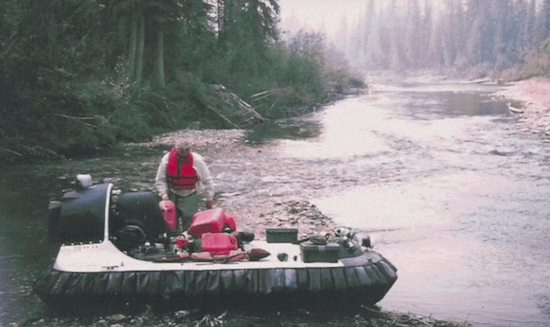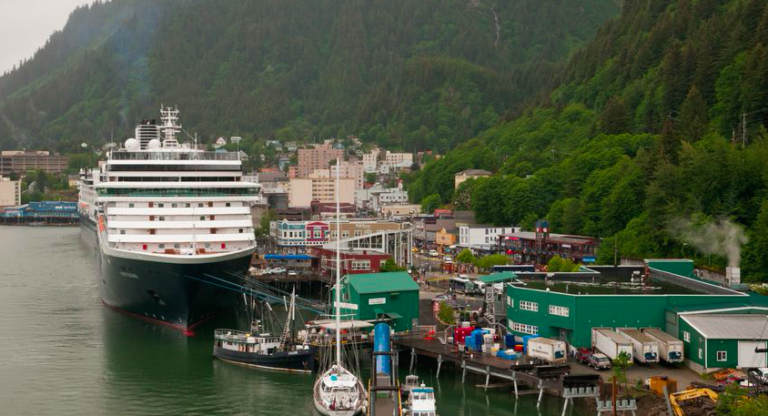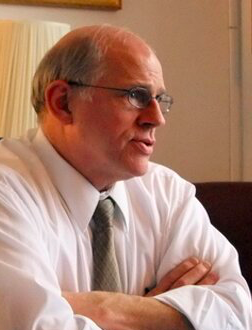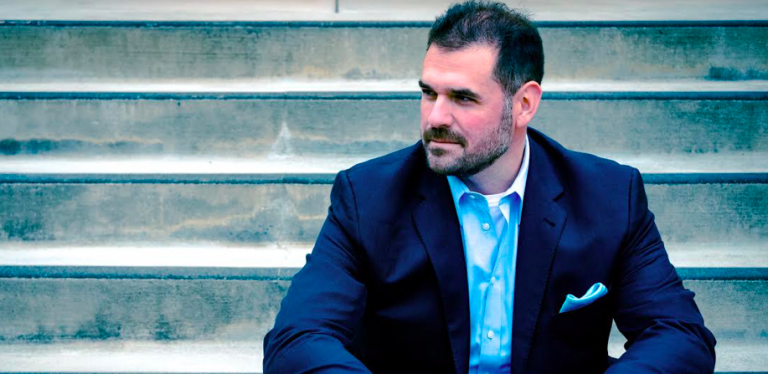On the front page of Sunday’s Washington Post, writer Robert Barnes does a deep dive into the 12-year legal battle of one Alaskan, who just wanted to hunt moose in his traditional way, but who was stopped by U.S. Park Service employees on the Nations River in the Yukon-Charley National Preserve.
His crime? Using the wrong kind of boat to navigate the river. Sturgeon was using a small hovercraft. He knew the river to be navigable, and he knew the Park Service had no jurisdiction over Alaska’s navigable waters. So he took the federal government to court on behalf of all Alaskans.
Barnes, who writes about Supreme Court issues for the Washington Post, travelled to Fairbanks this summer and spent time interviewing Sturgeon, and he went on a fundraising excursion on a riverboat owned by the Binkley family, where 200 people joined together for the “thanks a million” cruise to raise money to pay back Sturgeon’s legal fees after his historic “second win” at the Supreme Court.
“For 12 long years, John Sturgeon has fought for something he believes in, something that is bigger than himself. He took on the biggest of foes, the United States federal government.” — Craig Campeau, who sells boats and ATVs in Fairbanks, quoted in the Washington Post.
Here are the first few paragraphs of Barnes’ story and the link to the entire article at the end:
An Alaskan moose hunter beat the odds at the Supreme Court. It cost $1.5 million
FAIRBANKS, Alaska — Moose hunter John Sturgeon serves as both inspiration and warning for anyone who has ever gotten worked up over a perceived injustice and vowed to fight it “all the way to the Supreme Court.”
An inspiration because Sturgeon took on the federal government and — not once but twice — beat the odds to get the high court to accept his case and rule in his favor.
Why a warning? Because Sturgeon’s 12-year, only-in-Alaska battle to travel on a forbidden hovercraft through national parkland to his favorite hunting spot cost well north of $1.5 million.
“I had no idea how much it was going to cost, but you start down this slide and there’s no stopping it,” Sturgeon said. “Not many people could do what I did, because they don’t have the financial resources, which I don’t either. But I did have a cause that really ignited people.”
Sturgeon agreed to let The Washington Post examine the details of his costs and the donations to his cause to illuminate what it takes to bring a lawsuit before the Supreme Court.
Among his donors: the Alaska Wildlife and Conservation Fund, the National Rifle Association, the Alaska Conservative Trust, national and international hunting groups, hundreds of ordinary Alaskans and one very wealthy one.
Edward Rasmuson read about Sturgeon’s case, called him up and found him sincere, and then offered to help pay the legal bill. “I maybe gave $250,000 to $300,000 to $400,000 — hell, I don’t know,” Rasmuson said in an interview. “But I’m fortunate. I’m wealthy, I can afford it.”









